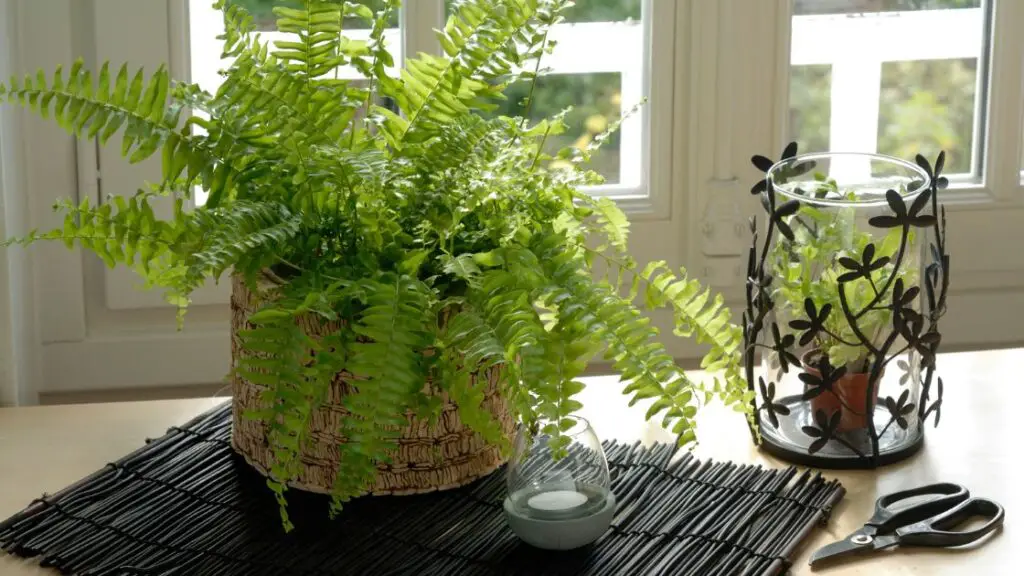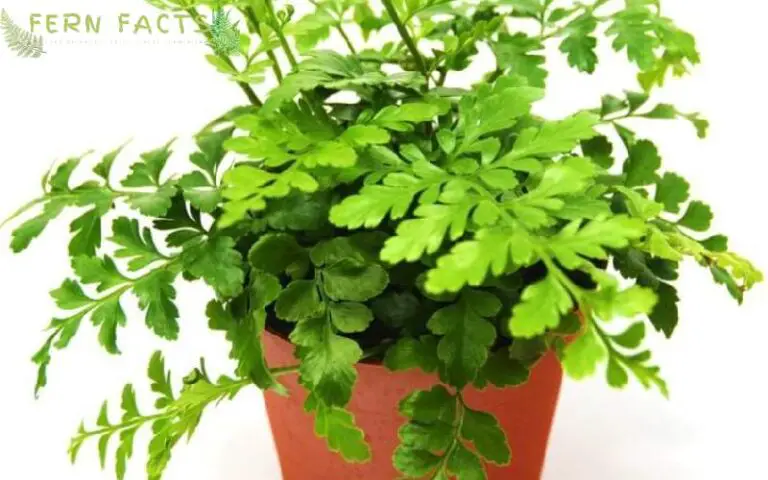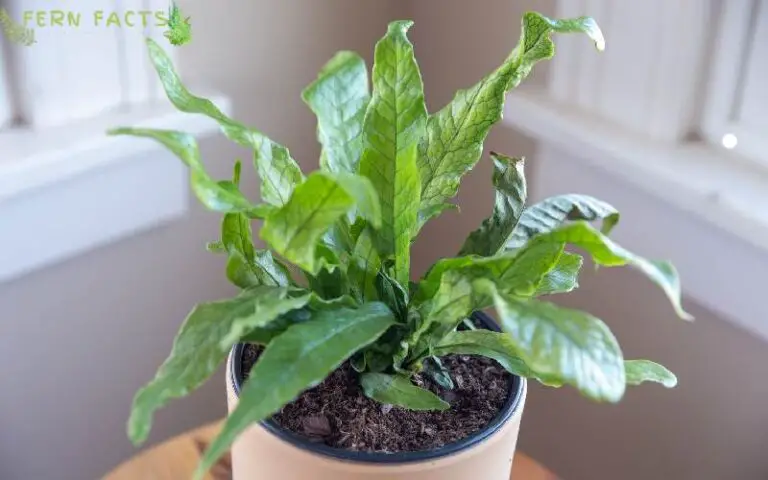Best Ferns For Full Sun
Have you been admiring ferns that you see in other’s yards and have decided you want to try growing them too? Ferns can be a wonderful addition to any garden landscape, even in pots and containers.
They are considered elegant, sophisticated, and sometimes delicate-looking plants that can liven up your exterior. But novices may need to realize just how many types of ferns there are and that each requires different light levels and maintenance.
If you’ve got a sunny spot in the yard where you plan your ferns, you’ll want to be sure you choose types tolerant of sun. Ferns are typically known for thriving in partial shade, so not every variety will be ideal.
By picking those tolerant of heat and sun, they will grow fast and strong and showcase some brilliant shades of green acting as a backdrop or a focal point. So let’s look at all you need to know about the best ferns for the sun.

Common Types of Sun Loving Ferns
Several sun-loving varieties could be perfect as you shop around for the perfect fern plants for your outdoor landscape. These are extremely tolerant not just of the sun but often of heat.
Some of the best ferns for full sun levels in the yard include:
- Autumn Fern
- Ostrich Fern
- Royal Fern
- Lady Fern
- Interrupted Fern
- Cinnamon Fern
- Bracken Fern
- Southern Shield Fern
- Evergreen Male Fern
- Scaly Golden Male Fern
- Southern Wood Fern
What are the Ideal Growing Conditions for sun ferns?
Just because you have a fern that does well in the sun doesn’t mean you don’t need to take extra steps. To ensure it thrives and looks the best and healthiest possible, it needs to have the right type of soil, and the correct temperature and moisture levels of the soil must be perfect. It may sound like a lot, but it’s quite simple once you perfect the basics.
If even one of these factors is out of balance, you risk the plant drying up, turning brown, root rot, the fern turning yellow, slow or no growth, disease, pests, etc.
Ferns require balanced and nutrient-rich soil that has plenty of organic matter. Peat moss is a popular matter to add, as is compost.
It’s always best to feel the base of the plant where it sits in the soil and see if it’s damp before watering its ferns like moist wet, and dry soil.
And as for temperature, that will come down to the variety of ferns. For ultra-sunny and warm conditions, opt for Osmunda Ferns like the Royal Fern, Cinnamon Fern, and Interrupted Fern, or a Florida-native variety – the Southern Shield Fern that loves plenty of sunshine, humidity, and high heat.
How Much Water Should I Give Sun Ferns
The same rule you use with partial-shade and full-shade ferns should apply to your sun ferns. Ferns as a species like moist soil. You always want to keep the soil dry, so if you’re going through a drought or a particularly warm stretch, you’ll need to water more often than usual. Pull back on the watering if you’re getting rain and temperatures are cooler.
As mentioned above, over-watering can lead to root rot, but overwatering will cause the fern to damage and dry up the fronds significantly.
Besides feeling the dampness of the soil, if the fern is in an outdoor pot, you can always pick it up. The pot should have some weight to it thanks to the moisture level in the soil.
If it feels lighter than normal, the soil has dried out, and it’s time for watering. Ferns need to be watered at least once a week, but typically much more often than that. You can find lots of helpful information online regarding how often and how much water to give your ferns.
How Much Sun Is Enough Sun?
Did you know that full sun doesn’t always mean direct sunlight all day long? For ferns, it means they get at least six hours of sun, but it should mainly be the indirect sun.
Direct sun can be too harsh on its fronds, causing them to discolor. And it also goes back to the soil; it’s hard for the fern to retain the ideal moisture level when it’s in direct sunlight.
As an essential guide, full sun is more than six hours per day, part-sun is 4-6 hours daily, part-shade is 4-6 hours daily, and full shade is less than four hours of sun. With that knowledge, you’ll be able to figure out what the different spots in your backyard would be classified as.
Do You Need to Fertilize Your Ferns?
The short answer is “yes.” They do require fertilization but in moderation. Be careful not to over-fertilize your ferns, as this will cause damage. Choose a balanced fertilizer that is 20-20-20 or 20-10-20 and fertilize about once a month during the growing season.
If fertilizing once a month seems like too much work, opt for a slow-release fertilizer that can be applied in spring, and then that’s it.
How Do You Maintain Ferns?
Besides watering and fertilizing, there are some other steps to maintain ferns. Pruning should be done when fronds dry out, discolor or die. Cut the frond at the base near the soil. Just be sure to use sharp pruners or scissors.
You’ll also need to watch for pests and diseases that can plague ferns. Some can be a minor nuisance, while others will require aggressive treatment and action.
For diseases, you may need to re-pot your ferns and treat them with a fungicide. Signs of common fern diseases include leaflets turning brown and dying, the fronds starting to get indentations, wrinkling up, and small dark green spots or brown ones showing up.
A Few Additional Considerations for You
As you proceed with your gardening project, a few additional considerations are mixing and matching varieties. Clumping ferns can look beautiful, especially if they are different types with different-sized and colored fronds. Pots can also be a spectacular option, allowing you to move the fern around the yard based on light conditions.
Mixing ferns with companion plants is also beautiful, and you can use plants such as azaleas, rhododendrons, coral bells, hostas, forget-me-nots, and caladiums, to name a few. Just be sure to pick a companion plant also tolerant of the full sun.
How much sun can ferns tolerate? Six hours of indirect sun is what you want to aim for when it comes to Autumn Fern, Ostrich Fern, Royal Fern, Lady Fern, Interrupted Fern, Cinnamon Fern, Bracken Fern, Southern Shield Fern, Evergreen Male Fern, Scaly Golden Male Fern or a Southern Wood Fern.
As long as it is one of the ones listed, the answer is yes to “Can I put my fern in full sun.” But what happens if a fern gets too much sun?
It’s best to move it right away, give it water and ensure that it’s not in direct sun moving forward.
Looking for a Sun-Loving Plant – Ferns Can Be the Answer
If you’ve got sunny spots in your yard where you want to add natural beauty and interest, ferns can be a great option if you pick a suitable variety. The good news is that many different types will thrive in the sun and heat.
Feel free to explore new-to-your varieties, research, and use an open mind when thinking about ideal placement. By doing this and providing the fern with the proper soil, moisture level, fertilizer, and pruning, you’ll be able to enjoy optimal growth and beauty.
We invite readers to share their experiences with the community so that you can help other fern enthusiasts with their gardens and pots. Sharing your love of gardening and horticulture can be wonderfully rewarding and informative.







